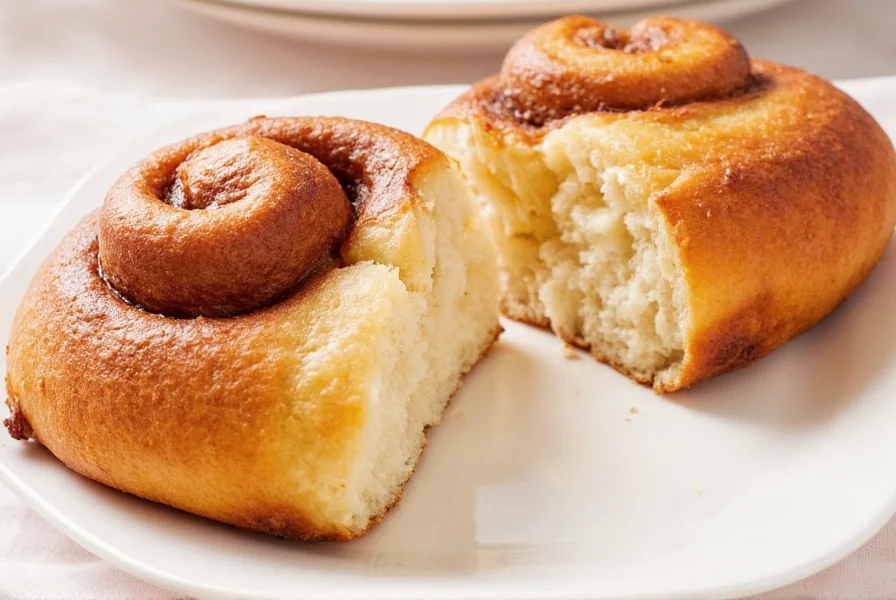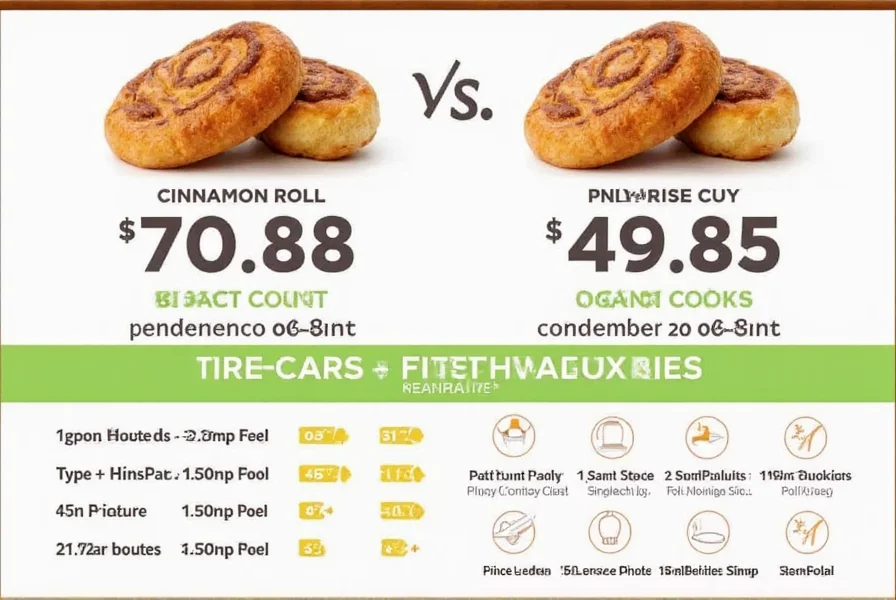Understanding the calorie content of cinnamon rolls is essential for anyone tracking their nutritional intake. These popular pastries pack a substantial energy punch that can easily fit—or exceed—your daily treat allowance. Let's examine what contributes to these numbers and how different variations affect the final count.
Factors That Determine Cinnamon Roll Calorie Count
The wide range in calorie counts stems from several key variables. Size represents the most significant factor—what constitutes a "standard" cinnamon roll differs dramatically across bakeries and homemade recipes. A small coffee shop roll might contain just 300 calories, while those oversized bakery versions can surpass 800 calories per serving.
Ingredients play another crucial role. Traditional cinnamon roll recipes use substantial amounts of butter, sugar, and refined flour—all calorie-dense components. The sweet frosting or glaze typically adds 100-200 additional calories. Some specialty recipes incorporate cream cheese, nuts, or additional fillings that further increase the calorie tally.
| Type of Cinnamon Roll | Approximate Calories | Primary Contributing Factors |
|---|---|---|
| Small coffee shop roll (2-3 oz) | 300-400 | Minimal frosting, basic ingredients |
| Medium bakery roll (3-4 oz) | 400-550 | Standard frosting, typical ingredients |
| Large gourmet roll (5+ oz) | 600-880 | Extra frosting, fillings, premium ingredients |
| Homemade (1 roll from 12-count recipe) | 350-500 | Recipe-dependent, often less frosting than commercial |
Nutritional Breakdown Beyond Calories
While calorie count matters, examining the complete nutritional profile provides better context for how cinnamon rolls fit into your diet. A typical medium cinnamon roll contains:
- Carbohydrates: 50-70g (20-25% of daily value)
- Sugars: 25-40g (50-80% of recommended daily limit)
- Fat: 15-25g (25-40% of daily value)
- Protein: 4-7g (minimal contribution to daily needs)
The high sugar content particularly stands out—many cinnamon rolls contain more sugar than the American Heart Association recommends for an entire day. This concentrated sugar delivers quick energy but offers little nutritional value, making cinnamon rolls best enjoyed occasionally rather than regularly.
Comparing Cinnamon Rolls to Other Pastries
Understanding where cinnamon rolls fall on the pastry spectrum helps contextualize their calorie impact:
- A standard cinnamon roll generally contains more calories than a plain bagel (250-350) but fewer than a filled danish (400-600)
- Compared to muffins, cinnamon rolls typically have higher sugar content though similar calorie counts
- Gluten-free cinnamon roll alternatives often contain comparable or even higher calories due to substitute ingredients
When considering how many calories in a large cinnamon roll versus smaller options, remember that portion control significantly impacts your actual intake. Many people unknowingly consume double the intended serving when faced with oversized bakery portions.
Health Considerations and Moderation
Cinnamon rolls represent what nutritionists call "discretionary calories"—those that provide energy but limited essential nutrients. Enjoying them occasionally as part of a balanced diet poses no health risk for most people. The concern arises when these high-sugar, high-calorie treats become regular indulgences.
For those monitoring their sugar intake, understanding cinnamon roll nutrition facts becomes particularly important. The combination of refined carbohydrates and added sugars can cause blood sugar spikes followed by crashes, potentially affecting energy levels and hunger signals.
If you're wondering are cinnamon rolls high in calories compared to other breakfast options, the answer is generally yes. A single cinnamon roll often contains more calories than a balanced breakfast of eggs, whole grain toast, and fruit—though it delivers far less protein and fiber.
Reducing Calories in Homemade Cinnamon Rolls
When preparing how many calories in a homemade cinnamon roll, you control the variables. Consider these modifications for a lighter version:
- Reduce sugar in both dough and filling by 25-30%
- Substitute some butter with unsweetened applesauce
- Use whole wheat flour for partial replacement of white flour
- Make a lighter glaze using powdered sugar alternatives
- Control portion size by making smaller rolls
These adjustments can reduce the calorie count by 25-40% while maintaining enjoyable flavor and texture. Even with modifications, however, cinnamon rolls remain an occasional treat rather than a dietary staple.
Reading Nutrition Labels for Store-Bought Options
When purchasing pre-packaged cinnamon rolls, carefully examine serving sizes. Many packages contain multiple servings despite appearing as a single item. That 400-calorie roll might actually be two servings, meaning the entire package contains 800 calories.
Compare brands to find options with lower sugar content without sacrificing too much flavor. Some bakeries now offer "light" versions specifically designed with reduced calories and sugar—though these often use artificial sweeteners that some consumers prefer to avoid.
Making Informed Choices
Knowing how many calories in a cinnamon roll empowers you to make conscious decisions about incorporating them into your eating pattern. Rather than viewing them as strictly "off-limits," consider them as occasional indulgences that fit within your overall calorie budget.
When you do enjoy a cinnamon roll, savor it slowly and mindfully. This practice enhances satisfaction while potentially reducing the urge to consume additional high-calorie treats. Pairing your cinnamon roll with protein or fiber-rich foods can also help moderate blood sugar response.












 浙公网安备
33010002000092号
浙公网安备
33010002000092号 浙B2-20120091-4
浙B2-20120091-4